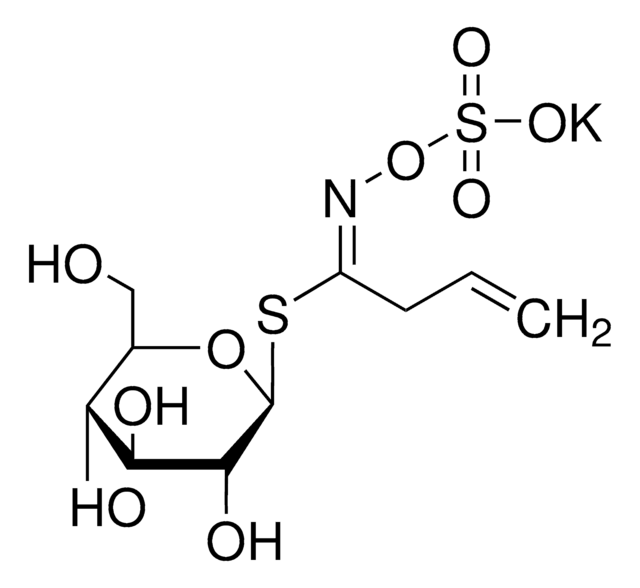574215
D,L-Sulforaphane
≥98% (UPLC), liquid, phase II detoxifying enzymes inducer, Calbiochem®
Synonym(s):
D,L-Sulforaphane, 1-Isothiocyanato-4-(methylsulfinyl)butane, R,S-Sulforaphane
About This Item
Recommended Products
product name
D,L-Sulforaphane, An isothiocyanate isolated from broccoli that acts as a potent inducer of phase II detoxifying enzymes in mouse tissues and murine hepatoma cells in culture.
Quality Level
Assay
≥98% (UPLC)
form
liquid
manufacturer/tradename
Calbiochem®
storage condition
OK to freeze
protect from light
color
slight yellow
solubility
ethanol: 10 mg/mL
DMSO: 20 mg/mL
shipped in
ambient
storage temp.
−20°C
InChI
1S/C6H11NOS2/c1-10(8)5-3-2-4-7-6-9/h2-5H2,1H3
InChI key
SUVMJBTUFCVSAD-UHFFFAOYSA-N
General description
Biochem/physiol Actions
Potent inducer of phase II detoxifying enzymes in mouse tissues and murine hepatoma cells in culture
Packaging
Warning
Reconstitution
Other Notes
Yu, R., et al. 2000. J. Biol. Chem.275, 2322.
Yu, R., et al. 1999. J. Biol. Chem.274, 27545.
Barcelo, S., et al. 1998. Mutat. Res.402, 111.
Maheo, K., et al. 1997. Cancer Res.57, 3649.
Zhang, Y., et al. 1994. Proc. Natl. Acad. Sci. USA91, 3147.
Zhang, Y., et al. 1992. Proc. Natl. Acad. Sci. USA89, 2399.
Legal Information
Storage Class Code
10 - Combustible liquids
WGK
WGK 3
Certificates of Analysis (COA)
Search for Certificates of Analysis (COA) by entering the products Lot/Batch Number. Lot and Batch Numbers can be found on a product’s label following the words ‘Lot’ or ‘Batch’.
Already Own This Product?
Find documentation for the products that you have recently purchased in the Document Library.
Customers Also Viewed
Our team of scientists has experience in all areas of research including Life Science, Material Science, Chemical Synthesis, Chromatography, Analytical and many others.
Contact Technical Service










